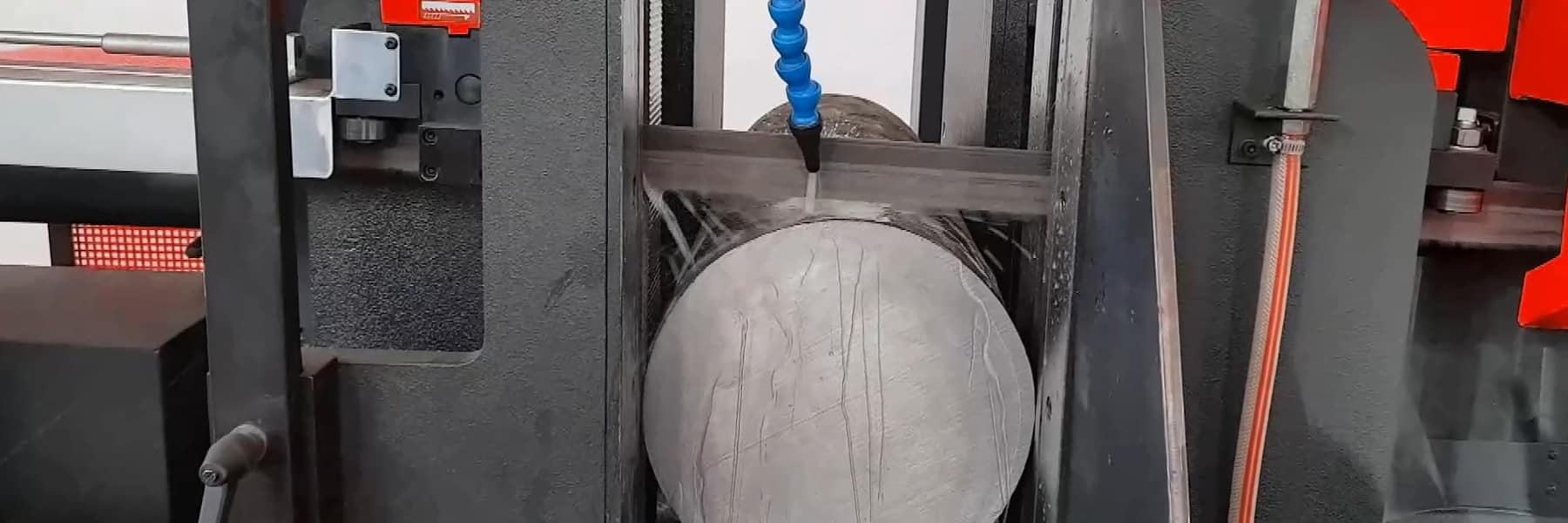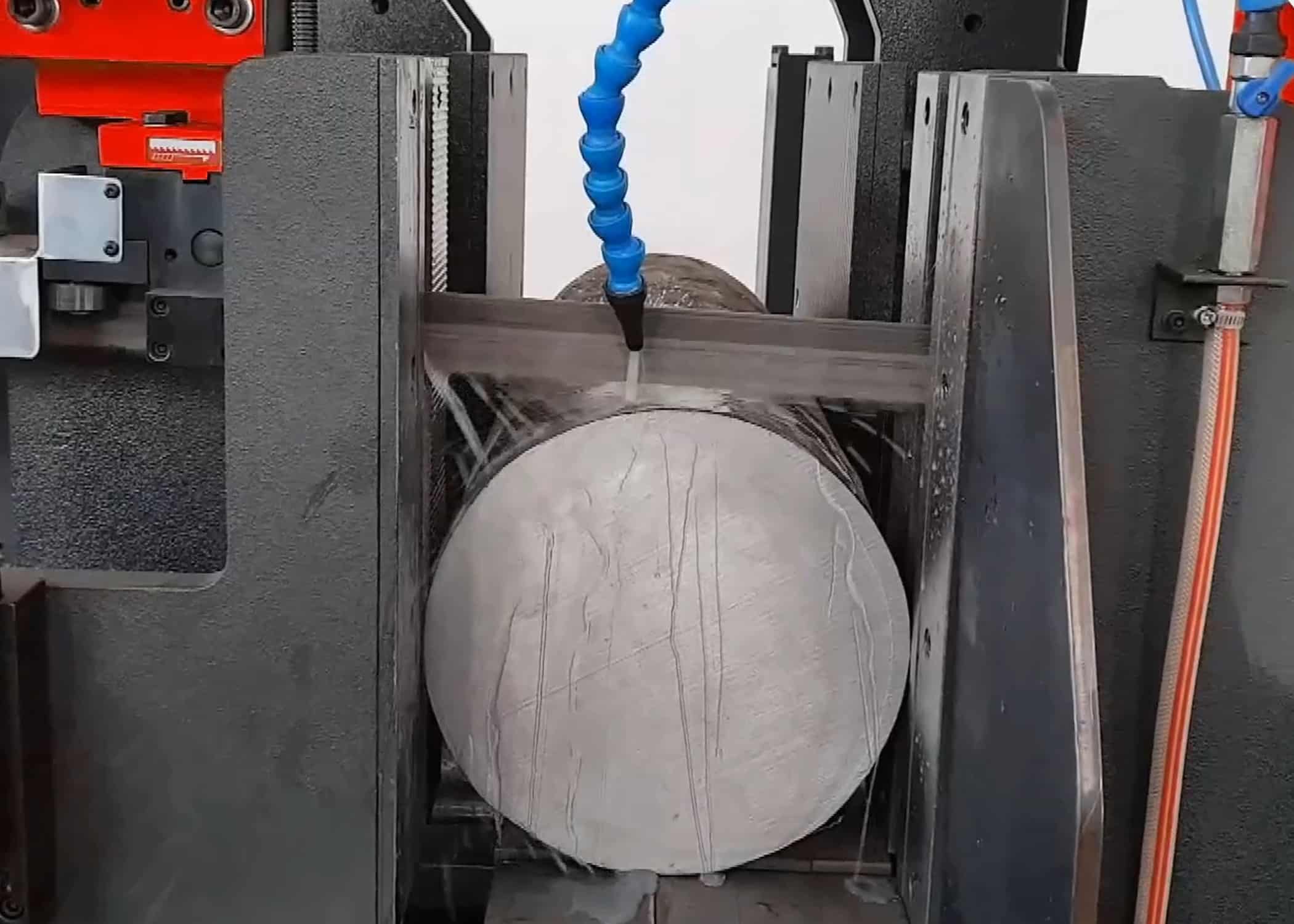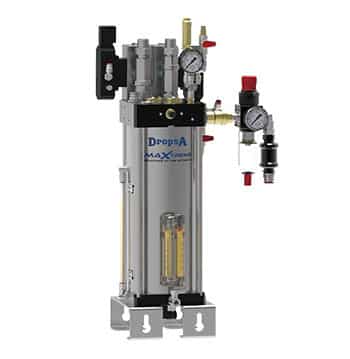Keeping a Cool Tool
Flood coolant has been a standard process in the machine tool industry for a long time—more than 150 years, in fact. Using a fast-moving liquid to cool and lubricate a cutting tool and workpiece alike, while washing away swarf (the chips that are cut away), made sense to some metalworker back in the day and the idea caught on throughout the industry. Using a liquid that had additives to help prevent corrosion on the cut parts quickly became a standard as well.
Most metalworking techniques generate some heat, but machining processes—with their removal of chips through fast cutting action—can really get hot. Broaching, cutting, drilling, grinding, finishing, milling, sawing, turning, and similar types of machining all create immense friction between the tooling and the workpiece, requiring a lubricant or “cutting fluid” that can also cool down both the tool and the part, not to mention the chips that fly off. That’s why such a lubricant is often referred to as a “coolant.”
The advantages of using cutting fluid during machining are numerous: increasing the life of the tooling, improving the surface finish of the machined part, protecting the part against rust and corrosion, and saving the user on their power bill by reducing the forces applied during the procedure. While leading to a quieter, cleaner, and easier cut, flood coolant does have a couple of major drawbacks: it’s wasteful and usually makes a mess. The splash of the coolant on the surrounding floor will also tend to stain the concrete and make even the cleanest-kept shop look untidy. While keeping the process cool is important, many machinists have turned to alternatives to flood cooling to assist in their cutting and turning operations.
Solutions for the Sloppy Shop
To reduce or avoid the mess associated with the use of flood coolant, some options exist:
- Floor Drying Agents | To minimize staining, many shops will spread out a floor drying agent to absorb the coolant. These can range from absorbent mats to granular products like kitty litter, peat moss, cellulose material left over from paper mill processing and even ground-up corn cobs. While this makes clean-up easier, it also creates a bigger industrial waste impact to the environment than just the coolant alone. In addition, many of the available absorbent products, including kitty litter, are made from diatomaceous earth, a natural clay that contains silica from the fossilized skeletons of diatoms, tiny aquatic organisms. Breathing in very small crystalline silica particles can eventually lead to multiple diseases, including chronic obstructive pulmonary disease (COPD), lung cancer, kidney disease, autoimmune disorders, cardiovascular impairment, and especially silicosis, an incurable lung disease that results in disability and death. The safety-minded shop owner, therefore, may want to consider machining methods that create less opportunity to have to deal with spilled coolant.
- Dry Machining | Depending on the type of machining, application, and process being performed, as well as the tooling and the material that is being worked on, dry machining can be an effective alternative to machining with flood coolant. It doesn’t work with every machine tool, but dry machining can be beneficial with some, such as milling, where it prevents the thermal shock to the tooling that is common when using coolant. Milling, like all machining operations, creates a great amount of heat due to the friction that is generated as the tooling engages the workpiece. When the tooling is removed from the process, the coolant immediately cools it, only to have the tooling return to the job and heat back up. This constant rapid shift between hot and cold at the cutting edge of the tooling breaks it down much faster than just running it hot all the time. Another benefit to not using coolant is in cost savings for both the purchase and disposal of the coolant. Some dry machining uses a compressed air system to deliver a high-powered stream of supercooled dry air to the work zone as a substitute for liquid coolant. Many types of machining still require coolant, however, such as those where the tooling has prolonged contact with the workpiece. Coolant is necessary to keep the cutting edge of a lathe tool from failing during turning, and it is required to evacuate swarf during drilling.
- Mist Lubrication Systems | Incorporating a mist-based lubrication procedure that delivers a fine spray of oil directly to the required points as necessary during machining is an excellent replacement for conventional flood coolant. The better systems are called MQL, short for Minimum Quantity Lubrication, and supply minimal amounts of oil in an aerosol format to the cutting surface via a precisely controlled compressed air stream. Also known as “near-dry machining,” this process allows for a high-performance operation with very little waste. King among these methods is a hybrid air/oil clean lubrication system like the one developed by DropsA, involving a continuously flowing stream of air constantly cooling lubrication points, accompanied by small droplets of oil that are injected into the air stream at regular intervals. Adding a unit like that to a band saw eliminates coolant floor stains while increasing the life of the machine.
Finding a Really Cool Setup
As with any metalworking machine purchase, upgrading your lubrication/coolant delivery system should be a topic for discussion with trusted advisors in the industry. See what other shops in your area that own similar equipment use with their machines. Talk to your machine tool seller and see what they recommend. There are pros and cons with every setup but keeping a clean and safe shop should be high on your list of concerns when looking at lubrication and cooling options.








